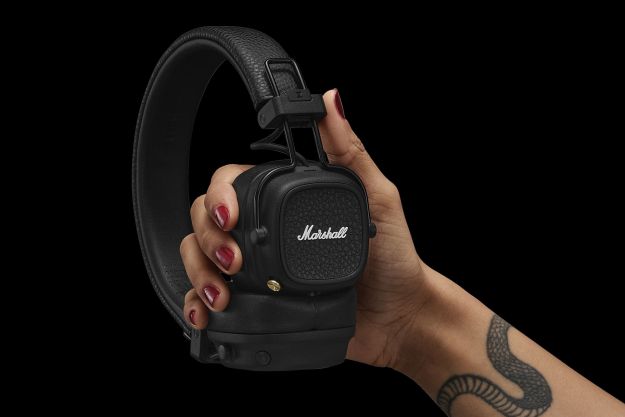- Lightweight
- comfortable fit; clean
- punchy bass; sharp highs and midrange; sturdy build quality
- Nearly worthless without included headphone extension; no slider to adjust left/right cord split
Summary
From the same icy lands that bring us flat-packed particle-board furniture, savory meatballs, and chewy candy fish, a company by the name of Jays set up shop in 2006 producing premium headphones. (We’re talking about Sweden, by the way.) Though Jays began carving out a name for itself with an extensive line of in-ear headphones, 2009 ushered in the very first on-ear models: including the bass-loaded v-Jays, which retail for £60, or about $98 with current exchange rates. Despite a rather unassuming design, the v-Jays impressed us with their comfortable fit, clean highs, and uncharacteristically skull-rattling bass.

Buyers looking for a pair of glitzy pair of headphones that really advertise their triple digit price tag might be a bit disappointed by the decided low-key approach Jays has taken with the v-Jays, but we loved it. There’s only a short band of glossy black accenting near the earpieces – the rest of the plastic has a matte, rubbery feel that reminded us of the durable finish on ThinkPad laptops. The different pieces fit snugly, giving the impression of quality, and little touches, like a strip of faux suede lining the bottom of the headband, definitely help clearly differentiate these from cheaper alternatives. It’s worth noting, though, that like a lot of premium-sounding Scandanavian brands, they’re not actually built in Europe, but China.
Unlike the traditional over-the-ear headphones that came with your Walkman back in 1991, the v-Jays use folding earpieces which swing 40 degrees into the headband when you’re done listening, to a compact the headphones down into a backpack-friendly size. We’re normally quite skeptical of all things folding on the basis of durability woes, but the hinges felt sturdy, the arms they were on flexed enough to prevent them from seeming stressed, and they close in so tightly to the headband that they actually seem protected in the stowed position.
Jays also opted for rather unusual square-shaped earpads, which look a bit like giant, foam-wrapped chiclets. We expected a square shape to be less comfortable on our decidedly not-square ears, but the soft padding and smooth pivoting system that lets them twist and swing considerably from the headband made for a surprisingly snug fit – an aerie weight of just 59 grams doesn’t hurt, either. The headband can also adjust to grow over two inches on each side, compensating for craniums from kid size to Leno size.

Sound quality took us totally off guard on first listen. For such a small pair of headphones – using a pair of modest 40mm open-air drivers, they truly manage to make good on Jays’ promise of “hard hitting”
We did note that these aren’t the most efficient drivers, though that probably won’t matter to most folks. To truly get the low end to sing, we consistently found ourselves pushing into the higher end of volume output on most devices. Even so, they’re nowhere near thirsty enough to require a separate headphone amp.

Looking for for punchy bass without the burden of clunky studio cans? Ditch the wannabe earmuffs and grab a pair of these powerful welterweight champs. The $98 price tag pushes them to the upper edge of what most average consumers might consider, but the sound quality justifies it for those who want to switch to headphones without sacrificing the grunt they get from a real system. Grado’s cheaper SR60s still win on clarity, and make a better choice for around the house, but the more modern styling, portability and bass from the v-Jays will definitely win them a following from some users.
Pros:
- Lightweight, comfortable fit
- Clean, punchy bass
- Sharp highs and midrange
- Sturdy build quality
Cons:
- Nearly worthless without included headphone extension
- No slider to adjust left/right cord split
Editors' Recommendations
- Focal debuts its most affordable open- and closed-back headphones
- Best Bose deals: Save on soundbars, headphones, and earbuds
- Best Bose headphone deals: Save on QuietComfort 45 and Earbuds II
- Beats Solo 4: the latest on-ear headphones get spatial and lossless audio
- Amazon deals: TVs, laptops, headphones and more



